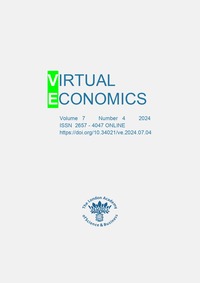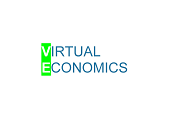Economic Diversification of the United Arab Emirates through the Space Sector and Its Diplomacy
DOI:
https://doi.org/10.34021/ve.2024.07.04(2)Keywords:
United Arab Emirates; economic diversification; space; diplomacy; industryAbstract
The article’s subject is the state of the United Arab Emirates, established in 1971 in a primarily desert area with approximately 180,000 inhabitants, almost entirely Arab. Today, the country is home to over 10 million people from over 200 nations and is undergoing a massive transformation. However, to avoid the consequences of becoming dependent on oil revenues, the UAE (top oil producer) is implementing economic diversification programs. This process is accompanied by a dynamic development of the state’s activity in space. The research objective is to examine the UAE’s space sector’s phenomenon and diplomatic activity, which impacts the country’s economic diversification. Consequently, research questions were posed: what initiatives can significantly contribute to the development of the UAE space industry, nonoil export, and, consequently, to economic diversification? What international space programs should be crucial for diplomacy? At the epistemology level, within the theoretical framework, the paper applied international political economy to explain the issue of diversification. Meanwhile, economic development theory focuses on production, consumption, and trade changes. In its light, the article discusses the rentier state theory, the concept of the resource curse, and the “Dutch disease” syndrome. To find answers to the research questions, appropriate empirical methods were used: quantitative research, statistical analyses, observation, including participant observation, and case studies. Additionally, the Herfindahl Hirschman Index (HHI), the Dickey-Fuller test (ADF), the autoregression model (VAR), the Johansen cointegration test, the vector error correction model (VECM), and the Granger causality test were applied. The methods contributed to obtaining the results and finding answers to the research questions. Hypothesis validation shows that numerous initiatives of the United Arab Emirates to build the space industry have not yet impacted economic diversification, but they have great future potential.
Downloads
References
World Bank Group. (2024). Manufacturing, value added (% of GDP) - United Arab Emirates. World Bank. https://data.worldbank.org/indicator/NV.IND.MANF.ZS?locations=AE)-AE.
Peterson, K., & Han, E. (2024). United Arab Emirates invests to meet 2027 crude oil production capacity goal. EIA. https://www.eia.gov/todayinenergy/detail.php?id=61365.
UAE Space Agency. (2017). UAE National Space Policy. https://www.unoosa.org/documents/pdf/copuos/lsc/2017/tech-08.pdf.
UAE Space Agency. (2019). National Space Strategy 2030. https://space.gov.ae/en/policy-and-regulations
Kulu, E. (2021). In-Space Economy in 2021- Statistical Overview and Classi cation of Commercial Entities. 72nd International Astronautical Congress (IAC 2021), Dubai, UAE. https://www.factoriesinspace.com/graphs/In-Space-Economy-2021_Erik-Kulu_IAC2021.pdf.
UAE. (2024). The National Space Fund. https://u.ae/en/about-the-uae/science-and-technology/key-sectors-in-science-and-technology/space-science-and-technology/the-national-space-fund.
PWC. (2022). The Case for Space. Opportunities in the Middle East Space sector. https://www.pwc.com/m1/en/publications/documents/the-case-for-space.pdf.
Nourse, H. O. (1968). Regional economics. Sage Publications.
Fridson, M., & Alvarez, F. (Eds.). (2002). Financial Statement Analysis: A Practitioner’s Guide. Jown Wiley and Sons.
Hvidt, M. (2013). Economic diversification in GCC countries: Past record and future trends. Springer.
Ross, M. L. (2017). What do we know about export diversification in oil-producing countries?. The Extractive Industries and Society, 6(3), 792-806.
Yamada, M., & Hertog, S. (2020). Introduction: revisiting rentierism - with a short note by Giacomo Luciani. British Journal of Middle Eastern Studies, 47(1), 1-5.
Corden, W. M., & Neary, J. P. (1982). Booming Sector and De-Industrialisation in a Small Open Economy. The Economic Journal, 92(368), 825-848.
Sachs, J. D., & Larrain, F. B. (1993). Macroeconomics in the Global Economy. Englewood Cliffs.
Auty, R. (1993). Sustaining Development in Mineral Economies: The Resource Curse Thesis. Routledge.
Ross, M. L. (2015). What have we learned about the resource curse?. Annual Review of Political Science, 18, 239-259.
Boschini, A. D., Pettersson, J., & Roine, J. (2007). Resource Curse or Not: A Question of Appropriability. The Scandinavian Journal of Economics, 109(3), 593-617.
Graham, A. D. (1995). Learning to Love the Dutch Disease: Evidence from the Mineral Economies. World Development, 23(10), 1765-1779.
Smith, B. (2004). Oil Wealth and Regime Survival in the Developing World, 1960-1999. American Journal of Political Science, 48(2), 232-246.
Vahabi, M. (2017). A critical survey of the resource curse literature through the appropriability lens. Sage Publications.
Ricardo, G., & Rigobon, R. (2003). An alternative interpretation of ‘the resource curse’: Theory and policy implications. National Bureau of Economic Research, 12, 42-59.
Gylfason, T., & Zoega, G. (2006). Natural Resources and Economic Growth: The Role of Investment. World Economy, 29(8), 1091-1115.
Kalaitzi, A., & Chamberlain, T. (2019). Further Evidence on Export-Led Growth in the United Arab Emirates: Are Non-Oil Exports or Re-Exports the Key to Economic Growth?. Review of Middle East Economics and Finance, 15(2), 20190007. https://doi.org/10.1515/rmeef-2019-0007.
Hirschman, A. O. (1964). The paternity of an index. American Economic Review. September, 761-762.
Siddiqui, S. A., & Afzal, M. N. I. (2022). Sectoral diversification of UAE toward a knowledge-based economy. Review of Economics and Political Science, 7(3), 184.
Ahmed, A. Z. E. (2015). The Role of Diversification Strategies in the Economic Development for Oil-Depended Countries: The Case of UAE. International Journal of Business and Economic Development, 3(1), 47-57.
Al-Hashemi, H. (2017). The role of institutions in economic diversification: the case of the UAE. In S. Mahroum & Y. Al-Saleh (Eds.), Economic Diversification Policies in Natural Resource Rich Economies (pp. 236-263). Routledge.
World Bank Group. (2024). GDP (current US$) - United Arab Emirates. World Bank. https://data.worldbank.org/indicator/NY.GDP.MKTP.CD?end=2022&locations=AE&start=1975&view=chart.
Bach, M. P., Žmuk, B., Kamenjarska, T., Bašić, M., & Milovanović, B. M. (2023). Regional economic performance and the differential prevalence of corporate and family business. Journal of Enterprising Communities: People and Places in the Global Economy, 17(5), 966-998.
Walters, J. (2023). UAE: Manufacturing sector overview. Emirates NBD. https://www.emiratesnbdresearch.com/en/articles/overview-of-the-uae-manufacturing-sector.
Statista. (2024). Value of the mining and quarrying sector contribution to the gross domestic product (GDP) of the United Arab Emirates from 2010 to 2020. https://www.statista.com/statistics/1105966/uae-oil-and-gas-sector-gdp/.
Krzymowski, A. (2022). Energy Transformation and the UAE Green Economy: Trade Exchange and Relations with Three Seas Initiative Countries. Energies, 15(22), 1-20.
Stojkoski, V., Koch, P., & Hidalgo, C. A. (2023). Multidimensional economic complexity and inclusive green growth. Communications Earth & Environment, 4(130).
OEC. (2024). United. Arab Emirates. https://oec.world/en/profile/country/are.
Kabbani, N., & Mimoune, N. B. (2021). Economic Diversification in the Gulf: Time to Redouble Efforts. Brookings Institution, 6.
UAE Ministry of Economy. (2024). International Trade Map. https://www.moec.gov.ae/en/international-trade-map.
Prasad, A., Subramani, K., Refass, S., Saidi, N., Salem, F., & Shepherd, B. (2024). Global Economic Diversification Index 2024. Mohammed bin Rashid School of Government.
Global Economic Diversification Index. (2024). United Arab Emirates. https://economicdiversification.com/?country_gedi=united-arab-emirates.
Shadab, S. (2023). The New Arab Gulf: Evaluating the Success of Economic Diversification in the UAE. In M. M. Rahman & A. Al-Azm (Eds.), Social Change in the Gulf Region (pp. 423-427). Springer.
The Government of Abu Dhabi. (2008). The Abu Dhabi Economic Vision 2030. https://www.actvet.gov.ae/en/media/lists/elibraryld/economic-vision-2030-full-versionen.pdf.
U.AE (2023). Dubai Industrial Strategy 2030. https://u.ae/en/about-the-uae/strategies-initiatives-and-awards/strategies-plans-and-visions/industry-science-and-technology/dubai-industrial-strategy-2030.
MOIAT. (2021). Mohammed bin Rashid launches Operation 300bn to advance UAE industrial sector. https://moiat.gov.ae/en/media-center/news/2021/05/23/mohammed-bin-rashid-launches-operation-300bn-to-advance-uae-industrial-sector.
WAM. (2017). VP, Abu Dhabi Crown Prince launch AED 500 mn Mars Science City at UAE Government Annual Meetings. https://www.wam.ae/en/article/hszr5vda-vp-abu-dhabi-crown-prince-launch-aed-500-mars
Krzymowski, A. (2020). The importance of Ukraine’s political and economic relationship with the United Arab Emirates for the Lublin Triangle. Economic Annals-XXI, 184(7-8), p. 22.
Krzymowski, A. (2021). The Weimar Triangle: France, Germany, Poland in the Middle East. United Arab Emirates Perspective. Przegląd Strategiczny, 14, 111.
AlQaisieh, D. (2022). Why is the UAE Interested in Developing Outer Space Programs? InterRegional for Strategic Analysis. https://www.interregional.com/article/Lift-Off:/1735/En.
Alexander, K., & Serhal, G. B. (2023). From Mars to the ISS: UAE’s space diplomacy and scientific ambitions. Gulf News. https://gulfnews.com/opinion/op-eds/from-mars-to-the-iss-uaes-space-diplomacy-and-scientific-ambitions-1.95515501.
Steenmans, I., Mauduit, J. C., Chataway, J., & Morisetti, N. (2019). Emirates Mars Mission: A mission to a transformative future. University College London.
U.AE. (2023). Space Science Strategy. https://u.ae/en/about-the-uae/strategies-initiatives-and-awards/strategies-plans-and-visions/industry-science-and-technology/national-space-strategy-2030.
Hainaut, B. (2023). The Middle East Enters the Space Race. Stimson. https://www.stimson.org/2023/the-middle-east-enters-the-space-race/.
Dunne, C. W. (2021). Arab Space Programs Level Up. Arab Center Washington DC. https://arabcenterdc.org/resource/arab-space-programs-level-up/.
UAE MOFA. (2022). UAE to chair Committee on The Peaceful Uses of Outer Space. https://www.mofa.gov.ae/en/mediahub/news/2022/6/2/02-06-2022-uae-outer-space.
President of the United Arab Emirates. (2023). Federal Decree by Law No. (46) of 2023 Concerning the Regulation of the Space Sector. https://uaelegislation.gov.ae/en/legislations/2129/download.
ESPI. (2021). Emerging Spacefaring Nations. ESPI Report, 79, 15-38. https://www.espi.or.at/wp-content/uploads/2022/06/ESPI-Report-79-Emerging-Spacefaring-Nations-Full-Report.pdf.
Krzymowski, A. (2020). Expo2020 Dubai on the journey to achieve the United Arab Emirates’ Soft Superpower. University of Sharjah (UoS) Journal of Humanities and Social Sciences, 17(2), 9-10-10.
Krzymowski, A. (2023). Strategic Significance of Joint Committees for Cooperation Between Three Seas Initiative’s Countries and the United Arab Emirates. Przegląd Strategiczny, 13(16), 119-120.
SWFI. (2024). Top 100 Largest Sovereign Wealth Fund Rankings by Total Assets. https://www.swfinstitute.org/fund-rankings/sovereign-wealth-fund.
Antwi-Boateng, O., & Al Jaberi, H. H. S. (2022). The post-oil strategy of the UAE: An examination of diversification strategies and challenges. Politics & Policy, 50(2), 380-407. https://doi.org/10.1111/polp.12457.
Downloads
Published
How to Cite
Issue
Section
License

This work is licensed under a Creative Commons Attribution-NonCommercial 4.0 International License.





